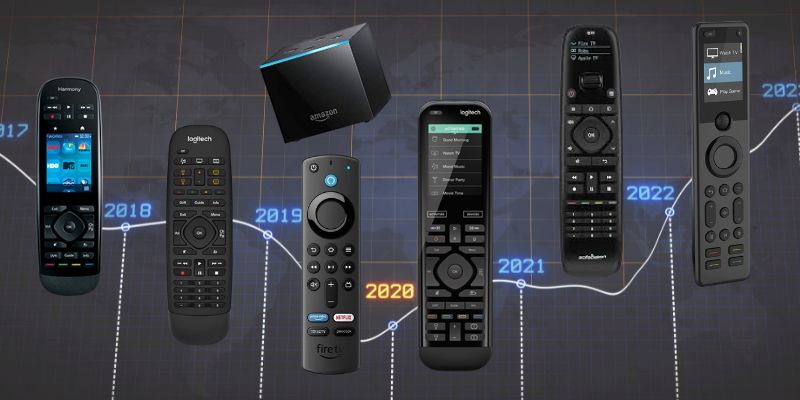As an Amazon affiliate, I earn from qualifying purchases.
Today, I will take you on a journey through the fascinating history of the remote control. Believe it or not, this handy device has existed for almost a century!
So, grab a cup of coffee, sit back, and let’s dive into the wonderful world of remotes.
The Birth of the Remote Control
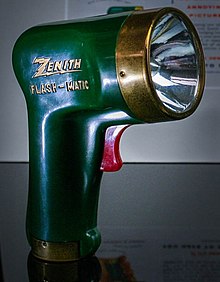
Zenith Flasmatic, Circa 1955
Zenith invented the first-ever remote that was intended to control a television. It was dubbed “Lazy Bones” but was tethered to the TV via a long wire.
In 1955, Eugene Polley, an engineer at Zenith, developed the first wireless TV remote control, the “Flash-Matic.” This device emitted a beam of light that users pointed at the TV to change channels or adjust the volume.
However, the Flash-Matic had a few drawbacks, such as accidentally changing channels if exposed to direct sunlight. Yikes!
This would be quite the buzzkill if it happened during an episode of Gunsmoke, I Love Lucy, or Leave it to Beaver.
From Flash-Matic to Space Command
Recognizing the need for improvement, Zenith engineer Robert Adler developed the “Space Command“ remote control in 1956.

Robert Adler

Adler’s Zenith Space Command 600
This device used ultrasonic frequencies instead of light to transmit signals, making it more reliable.
The Space Command quickly gained popularity and paved the way for future remote-control designs.
Nice work, Robert!
Infrared Remote Controls Emerge
In 1980, Philips introduced the first infrared (IR) remote control. IR remotes use invisible light beams to send signals, making them more efficient and less prone to interference.
The majority of remote controls used today still rely on IR technology.
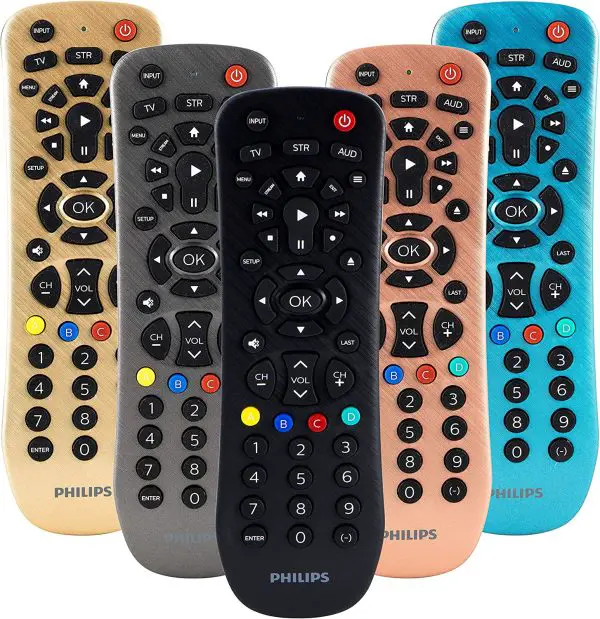
Philips’ Present-Day Universal Remotes
In fact, Philips, GE, and RCA have popular options for inexpensive IR universal remotes today.
Speaking of universal remotes…we’ll cover that topic next in our storied history of the remote control.
The Rise of Universal Remotes
The 1990s saw the introduction of universal remote controls designed to work with multiple devices from different manufacturers. These remotes offered a convenient solution for households with numerous electronics, eliminating the need for multiple remotes.
Logitech’s Harmony series became one of the market’s most popular universal remote controls, with its user-friendly interface and ability to control various devices. Harmony remained the leader until Logitech decided to stop manufacturing remotes in 2021.

Logitech Harmony Elite (Now Discontinued)
High-end universal remote integrators like Crestron, Neeo, and Savant started to offer sophisticated control systems for luxury homes and commercial spaces. These systems provided seamless integration with various devices, such as home theaters, lighting, and security systems, offering a truly customized experience.
Today, Sofabaton is another noteworthy player in the universal remote market, offering affordable and user-friendly solutions for controlling multiple devices. This is probably the best option for controlling multiple devices today. Check out my full Sofabaton X1S review if you want to learn more.
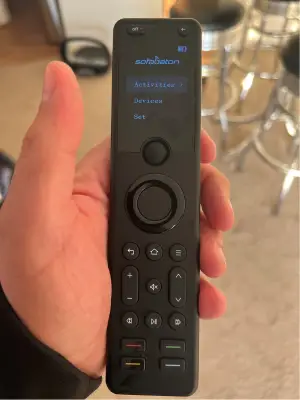
My Sofabaton X1 Remote
Remote Control Timeline
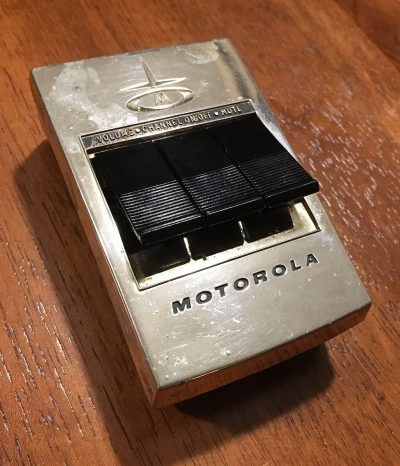
1950s Remote from Motorola
Now that we’ve covered the basics about the history of the remote control let’s take a closer look at the remote control’s development through a timeline and table:
Table of Remote Control Milestones by Year
| Year | Event |
|---|---|
| 1950 | Zenith’s “Lazy Bones” is the first commercially successful TV remote control. It connected to the TV via a long wire. |
| 1955 | Zenith engineer Eugene Polley invents the “Flashmatic,” the first wireless remote control. |
| 1956 | Zenith engineer Robert Adler develops the Space Command remote control. |
| 1980 | Philips introduces the first infrared remote control. |
| 1990s | Universal remote controls become popular. |
| 2000s | Logitech Harmony, Crestron, Neeo, and Savant emerge as key players in remote control technology. |
| 2015 | Sofabaton enters the universal remote market. |
| 2020 | Voice assistants see widespread adoption and include the capability to voice control TVs. |
| 2021 | Logitech stops making new Harmony remotes, leaving a tremendous opportunity for Sofabaton and others to gain market share. |
| 2023 | Newcomer Yio is expected to enter the market with an all-in-one device to control home theaters and smart homes. |
The Era of Voice-Controlled Assistants
As technology evolved, remote controls have become more advanced and sophisticated. In recent years, voice-controlled assistants like Amazon’s Alexa, Google Assistant, and Apple’s Siri have revolutionized how we interact with our devices.
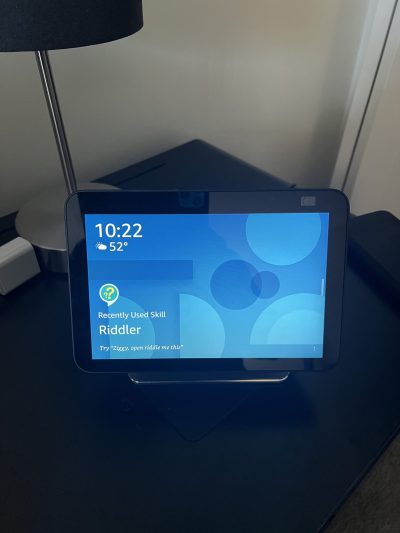
My Echo Show with Alexa Built-In
These virtual assistants can control compatible devices using simple voice commands, making changing channels, adjusting the volume, or even searching for your favorite show easier.
Conclusion: The Future of Remote Controls
As you can see, the humble remote control has come a long way since its inception at Zenith Radio Corporation. Today, it’s an essential part of our daily lives, allowing us to control a wide range of electronic devices easily.
Who knows what the future holds for the remote control? One thing’s for sure: it will continue to evolve and adapt to our ever-changing needs and desires.
I look forward to getting my hands on the Yio Remote Two when it is released later this year.
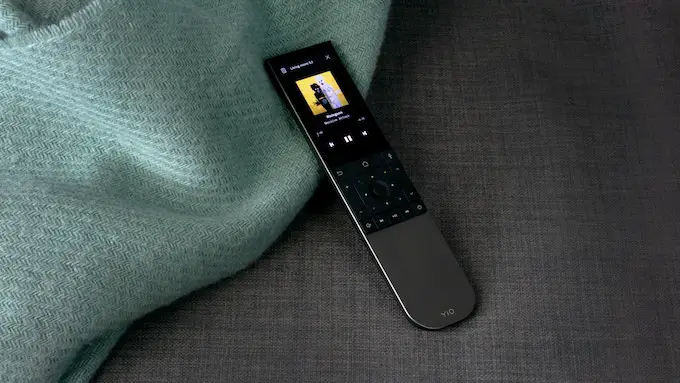
Yio Remote Two
I hope you enjoyed this brief overview of the remote control’s history! Stay tuned for more exciting stories and tidbits about home theater technology.
? Up Next: 11 Best Universal Remotes This Year

Tim Brennan is a technology blogger and hosts the @TecTimmy YouTube channel. He writes about smart homes at oneSmartcrib, home theaters at UniversalRemoteReviews, and AI in writing at Writeinteractive. A graduate of Northeastern University School of Journalism, he has written about technology for 30 years. Tim lives on the ocean in Nahant, Massachusetts.
Please subscribe to my YouTube channel for a fun take on all things tech.

